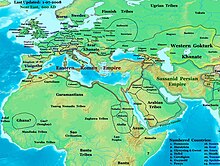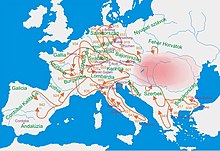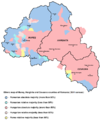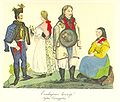Magyar - O Povo da Hungria
Fonte: http://en.wikipedia.org/wiki/Hungarian_people
| 1st row: Saint Stephen I • Matthias Corvinus • Gábor Bethlen • Béla Bartók 2nd row: Tivadar-K Csontváry • János Bolyai • Loránd Eötvös • József Eötvös 3rd row: Zoltán Kodály • János Arany • István Széchenyi • Francis II Rákóczi | |||||||||||||||||||||||||||||||||||||||||||||||||||||||||||||||||||||||||||||||||||||||
| População Total | |||||||||||||||||||||||||||||||||||||||||||||||||||||||||||||||||||||||||||||||||||||||
|---|---|---|---|---|---|---|---|---|---|---|---|---|---|---|---|---|---|---|---|---|---|---|---|---|---|---|---|---|---|---|---|---|---|---|---|---|---|---|---|---|---|---|---|---|---|---|---|---|---|---|---|---|---|---|---|---|---|---|---|---|---|---|---|---|---|---|---|---|---|---|---|---|---|---|---|---|---|---|---|---|---|---|---|---|---|---|---|
| c. 14-15 million | |||||||||||||||||||||||||||||||||||||||||||||||||||||||||||||||||||||||||||||||||||||||
| Regiões com população significativa | |||||||||||||||||||||||||||||||||||||||||||||||||||||||||||||||||||||||||||||||||||||||
| |||||||||||||||||||||||||||||||||||||||||||||||||||||||||||||||||||||||||||||||||||||||
| Idiomas | |||||||||||||||||||||||||||||||||||||||||||||||||||||||||||||||||||||||||||||||||||||||
| Hungarian | |||||||||||||||||||||||||||||||||||||||||||||||||||||||||||||||||||||||||||||||||||||||
| Religião | |||||||||||||||||||||||||||||||||||||||||||||||||||||||||||||||||||||||||||||||||||||||
|
Migração dos Húngaros
O príncipe Árpád cruzando os Cárpatos. Um detalhe a partir da chegada dos húngaros, Feszty Árpád e seus assistentes em área vasta (mais de 1800 m²), pintado para comemorar o aniversário de 1000 anos da conquista Magyar da Hungria, agora exibido no site Opusztaszer Memorial Nacional da Hungria.
Campanhas húngaras no século 10. A oração "Sagittis Hungarorum libera nos Domine" ("Senhor, salva-nos das flechas dos húngaros") vem a partir deste período.
A entrada dos húngaros para a bacia dos Cárpatos, do Pictum Chronicon, 1360.
Hungarian diaspora
From Wikipedia, the free encyclopedia
Diáspora Húngara (Magyar diáspora) é um termo que engloba a população de etnia húngara total localizada fora do que é hoje a Hungria.No primeiro estão aqueles que são autóctones à sua pátria, e vivem fora da Hungria desde as alterações de fronteiras do pós-guerra ou Tratado de Trianon de 1920.[Nota 1] As forças vitoriosas redesenharam as fronteiras da Hungria de modo que atravessaram áreas de maioria de húngaros.Como conseqüência, 3,3 milhões de húngaros se encontraram automaticamente fora das novas fronteiras.Estes húngaros normalmente não são contados para o termo "diáspora húngara", independentemente; eles são listados neste artigo.O outro grupo principal são os emigrantes que deixaram a Hungria em vários momentos (por exemplo, a Revolução Húngara de 1956).Para saber mais, clique em Mais informações , abaixoHúngaros, também conhecido como magiares (em húngaro: magyarok); somos uma nação e grupo étnico que fala húngaro e está principalmente associada com a Hungria.Há cerca de 14 -15.000.000 de húngaros, dos quais 10 milhões vivem na Hungria de hoje (a partir de 2011).[18] cerca de 2,2 milhão de húngaros vivem em áreas que eram parte do Reino da Hungria antes da dissolução do Império Austro-Húngaro, Monarquia e do Tratado de Trianon, e agora são peças de países da Hungria em seus sete vizinhos, especialmente da Roménia, Eslováquia, Sérvia e Ucrânia.Grupos significativos de pessoas com ascendência húngara vivem em várias outras partes do mundo, a maioria deles nos Estados Unidos, Alemanha, o Reino Unido, Brasil, Argentina, Chile, Canadá e Austrália.Ao contrário dos húngaros que vivem no território ex-pré-( 1918-1920 ), Reino da Hungria, apenas alguns dos húngaros étnicos em outras áreas preservam a língua húngara e as tradições.Os húngaros podem ser classificados em vários subgrupos de acordo com características locais linguísticas e culturais; subgrupos com identidades distintas incluem os Székely, os Csángó, os Palóc, e as pessoas Jassic.
|
Distribution by country
| Country | Hungarian population | Note | Article |
|---|---|---|---|
| Neighbor countries of Hungary | |||
| 1,434,377 (2002)[2] (not including Csángós[3]) | Autochthonous in Transylvania,[4] Csángó people in Moldavia | Hungarians in Romania | |
| 520,528 (2001)[5] | Autochthonous[6] | Hungarians in Slovakia | |
| 293,299 (2002)[7] | Autochthonous in Vojvodina | Hungarians in Vojvodina | |
| 156,600 (2001) | Autochthonous in Zakarpattia Oblast | Hungarians in Ukraine | |
| 40,583 (2001)[8] | Autochthonous in Burgenland | Hungarians in Austria | |
| 16,595 (2001)[9] | Autochthonous in Croatia, except Istria and Dalmatia. | ||
| 6,243 (2001) | Autochthonous in Eastern Slovenia | ||
| Other countries | |||
| 1,563,081 (2006)[10] | Immigrants | Hungarian American | |
| 315,510 (2006)[11] | Immigrants | Hungarian Canadians | |
| 200,000 to 250,000 (2000s) | Immigrants | ||
| 120,000 (2004)[12] | Immigrants | Hungarians in Germany | |
| 100,000 to 200,000 (2000s) | Immigrants | ||
| 80,135 (2001) | Immigrants | Hungarians in the United Kingdom | |
| 80,000 (2002)[13] | Immigrants | Hungarian Brazilian | |
| 76,500 (2002) | Immigrants | ||
| 67,616(2006)[14] | Immigrants | Hungarian Australian | |
| 40,000 to 50,000 (2000s) | Immigrants | Hungarians in Argentina | |
| 40,000 (2008)[citation needed] | Immigrants | Hungarians in Chile | |
| 20,000 to 25,000 (2000s) | Immigrants | ||
| 14,672 (2001) | Immigrants | ||
| 6,800 (2001) | Immigrants | ||
| 3,328 (2006)[15] | Immigrants | ||
| 1,476 (2006) | Immigrants | Hungarian New Zealander | |
| 5.2 - 5.6 million | |||
Famous people of Hungarian descent
Main category: People of Hungarian descent
| Country | Name | Occupation | Source |
|---|---|---|---|
| List is sorted alphabetically. | |||
| Drew Barrymore | entertainer/actress | [16] | |
| Adrien Brody | entertainer/actor | [17] | |
| Tony Curtis | entertainer/actor | [18] | |
| Louis C.K. | entertainer/comedian | [19] | |
| Rodney Dangerfield | entertainer/comedian | [20] | |
| Stephen Fry | entertainer/comedian | [21] | |
| Zsa Zsa Gabor | entertainer/actress | [22] | |
| Peter Carl Goldmark | scientist/inventor | ||
| George de Hevesy | scientist/inventor | [23] | |
| John George Kemeny | scientist/inventor | [24] | |
| Paul Nemenyi | scientist/mathematician | [25] | |
| John von Neumann | mathematician | [26][27] | |
| Joaquin Phoenix | entertainer/actor | [28] | |
| Joseph Pulitzer | journalist | [29] | |
| Gene Simmons | entertainer/musician | [30] | |
| Jerry Seinfeld | entertainer/comedian | [30] | |
| Nicolas Sarkozy | 23rd President of the Fench Republic | [31] | |
| Leó Szilárd | scientist/inventor | [32] | |
| Edward Teller | scientist/inventor | [33] |
Gallery
- Peter Carl Goldmark (1906–1977), inventor of vinyl record (LP) and CBS color television.
- John von Neumann (1903–1957), American mathematician and physicist of Hungarian descent.
- American stand-up comedian and Seinfeld star Jerry Seinfeld is of Hungarian descent.
- American actor Adrien Brody, who starred in The Pianist, is of Hungarian descent.
- English actor, writer, comedian, author and film director Stephen Fry is of Hungarian descent.
- American comedian Rodney Dangerfield, who got "no respect", is of Hungarian descent.
- American actress Zsa Zsa Gabor is of Hungarian descent.
- American musician and a KISS member Gene Simmons is of Hungarian descent.
Mapas
- Kingdom of Hungary in the late 13th century
- Migrations of the Székely Hungarians
- Hungarians in Vojvodina, Serbia
- Areas with ethnic Hungarian majorities in the neighboring countries of Hungary, according to László Sebők.[53]
Roupas Tradicionais
Folclore e pontos turísticos
- Voivodina Hungarians women's national costume
- Budapest, the Hungarian capital
- Sopron, "The Most Loyal Town"
- Eszterháza, the "Hungarian Versailles"
- A Hungarian town, Eger
- The Hungarian Puszta
- The Turul, the mythical bird of the origin myth of the Hungarian people
See also
Notes
- ^ Hungarian Central Statistical Office. Retrieved 25 July 2010.
- ^ (Romanian) "Comunicat de presă privind rezultatele provizorii ale Recensământului Populaţiei şi Locuinţelor – 2011", at the 2011 Romanian census site; accessed February 11, 2012
- ^ 2001 Slovakian Census
- ^ 2002 Serbian Census
- ^ National composition of population
- ^ 2001 Austrian census
- ^ Položaj Nacionalnih Manjina U Republici Hrvatskoj - Zakonodavstvo I Praska
- ^ Slovenia
- ^ Bund Ungarischer Organisationen in Deutschland
- ^ Národnost ve sčítání lidu v českých zemích
- ^ a b c d e 2006 community survey
- ^ Russia Report to COE
- ^ CSO Ireland - 2006 Census
- ^ Republic of Macedonia - State Statistical Office
- ^ Revista Época Edição 214 24 June 2002
- ^ Hungarian Embassy in Buenos Aires 20 June 2009
- ^ Australian Bureau of Statistics (Census 2006)
- ^ Eurostat. Retrieved 28 March 2012.
- ^ a b c Peter F. Sugar, ed. (1990-11-22). A History of Hungary. Indiana University Press. p. 9. ISBN 978-0-253-20867-5. Retrieved 2011-07-06.
- ^ Edward Luttwak, The grand strategy of the Byzantine Empire, Harvard University Press, 2009, p. 156
- ^ "Genetic structure in relation to the history of Hungarian ethnic groups". Human Biology. 1996.
- ^ Comparison of maternal lineage and biogeographic analyses of ancient and modern Hungarian populations, U.S. National Library of Medicine
- ^ Csanád Bálint (10 2008). "A történeti genetika és az eredetkérdés(ek)". Magyar Tudomány: 1170. Retrieved 2009-10-06.
- ^ Pál Lipták: A magyarság etnogenezisének paleoantropológiája (The paleoanthropology of Hungarian people's ethnogenesis) (Antropológiai Közl., 1970. 14. sz.)
- ^ Róna-Tas, András (1999). Hungarians and Europe in the Early Middle Ages. pp. 96.
- ^ Blench, Roger; Matthew Briggs (1999). Archaeology and Language. Routledge. pp. 210. ISBN 0-415-11761-5. Retrieved 2008-05-21.
- ^ István Fodor (1982). In search of a new homeland: the prehistory of the Hungarian people and the conquest. Corvina. p. 122.
- ^ a b c d e A Country Study: Hungary. Federal Research Division, Library of Congress. Retrieved 2009-03-06.
- ^ Peter F. Sugar, Péter Hanák, Tibor Frank, A History of Hungary, Indiana University Press, 1994 page 11. Google Books
- ^ Magyars
- ^ Piotr Eberhardt (2003). Ethnic Groups and Population Changes in Twentieth-century Central-Eastern Europe. M. E. Sharpe, Armonk, NY and London, England, 2003. ISBN 978-0-7656-0665-5.
- ^ "Szekler people". Encyclopædia Britannica.
- ^ The Hungarians of Hungary
- ^ History of Hungary, 895-970
- ^ The Magyars (650-997 AD)
- ^ Milan Tutorov, Banatska rapsodija, istorika Zrenjanina i Banata, Novi Sad, 2001.
- ^ Hungarian historians give the lowest estimates as 70,000 people, while Serbian and Slovak authors suggest much lower numbers; around 25,000.
- ^ Specifically, the Latin term natio hungarica referred to all nobles of the Kingdom of Hungary regardless of their ethnicity.
- ^ a b c d e f g Hungary. (2009). In Encyclopædia Britannica. Retrieved May 11, 2009, from Encyclopædia Britannica Online
- ^ a b c d e f A Country Study: Hungary. Federal Research Division, Library of Congress. Retrieved 2009-03-06.
- ^ a b "International Boundary Study – No. 47 – April 15, 1965 – Hungary – Romania (Rumania) Boundary". US Bureau of Intelligence and Research.
- ^ Historical World Atlas. With the commendation of the Royal Geographical Society. Carthographia, Budapest, Hungary, 2005. ISBN 963-352-002-9CM
- ^ a b c d e f Steven W. Sowards. "Twenty-Five Lectures on Modern Balkan History (The Balkans in the Age of Nationalism), Lecture 4: Hungary and the limits of Habsburg authority". Michigan State University Libraries. Retrieved 2009-05-11.
- ^ a b C. A. MaCartney D. Litt. (1962). Hungary A Short History. Edinburgh University Press.
- ^ Robert A. Kann (1980). A history of the Habsburg Empire, 1526-1918. University of California Press. p. 205. ISBN 0-520-04206-9, 9780520042063.
- ^ Peaks/waves of immigration
- ^ Kocsis, Károly (1998). "Introduction". Ethnic Geography of the Hungarian Minorities in the Carpathian Basin. Simon Publications LLC. ISBN 1-931313-75-X. Retrieved 2008-05-21.
- ^ Bugajski, Janusz (1995). Ethnic Politics in Eastern Europe: A Guide to Nationality Policies, Organizations, and Parties. M.E. Sharpe (Washington, D.C.). ISBN 1-56324-283-4, 9781563242830.
- ^ Kovrig, Bennett (2000), Partitioned nation: Hungarian minorities in Central Europe, in: Michael Mandelbaum (ed.), The new European Diasporas: National Minorities and Conflict in Eastern Europe, New York: Council on Foreign Relations Press, pp. 19–80.
- ^ Raffay Ernő: A vajdaságoktól a birodalomig. Az újkori Románia története (From voivodeships to the empire. The modern history of Romania). Publishing house JATE Kiadó, Szeged, 1989, pp. 155–156)
- ^ a b "Nyolcmillió lehet a magyar népesség 2050-re". origo. Retrieved 2009-04-19.
- ^ Hungary: Transit Country Between East and West. Migration Information Source. November 2003.
- ^ Sebők László's ethnic map of Central and Southeastern Europe
References
- Molnar, Miklos (2001). A Concise History of Hungary. Cambridge Concise Histories (Fifth printing 2008 ed.). Cambridge, United Kingdom: Cambridge University Press. ISBN 978-0-521-66736-4.
External links
- Origins of the Hungarians from the Enciklopédia Humana (with many maps and pictures)
- Hungarians in the Carpathian Basin
- Hungary and the Council of Europe
- Facts about Hungary
- Hungarians outside Hungary - Map
- MtDNA and Y chromosome polymorphisms in Hungary: inferences from the Palaeolithic, Neolithic and Uralic influences on the modern Hungarian gene pool
- Probable ancestors of Hungarian ethnic groups: an admixture analysis
- Human Chromosomal Polymorphism in a Hungarian Sample
- Hungarian genetics researches 2008-2009 (in Hungarian)
































































Comentários
Postar um comentário
Olá deixe aqui o seu comentário. Devido à Spams e propaganda que nada tem a ver com o conteúdo do blog a moderação de comentários foi ativada. Seu comentário será publicado depois de aprovado. Muito obrigado por sua participação!